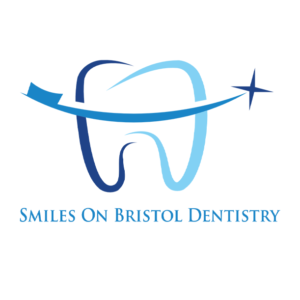 Most people know that regular trips to the dentist can prevent cavities and other dental-related issues, but Santa Ana Dentist Dr. Kalantari of Smiles on Bristol Dentistry, also advises that regular dental visits can be the key to spotting oral cancers. The various oral cancers are some of the most deadly cancers in the world, due to the fact that they are often not diagnosed until they have reached an advanced stage. Oral cancer screenings are a standard procedure of routine dental appointments. While oral cancer used to be most commonly found only in people who smoked and drank alcohol, there has been a recent upswing in the occurrences of oral cancers in nonsmokers, so even nonsmokers should double check with their dentists to make sure they are cancer free.
Most people know that regular trips to the dentist can prevent cavities and other dental-related issues, but Santa Ana Dentist Dr. Kalantari of Smiles on Bristol Dentistry, also advises that regular dental visits can be the key to spotting oral cancers. The various oral cancers are some of the most deadly cancers in the world, due to the fact that they are often not diagnosed until they have reached an advanced stage. Oral cancer screenings are a standard procedure of routine dental appointments. While oral cancer used to be most commonly found only in people who smoked and drank alcohol, there has been a recent upswing in the occurrences of oral cancers in nonsmokers, so even nonsmokers should double check with their dentists to make sure they are cancer free.
Oral cancers often start with small red or white lesions that can be found anywhere in the mouth or upper throat. Because the mouth is already an opening to the body, doctors can more easily examine the area for cancer, but due to the discrete nature of the early stages of cancer, the average person usually will not notice it. The lesions are generally painless when they first form, but can be distinguished from other lesions because they tend to bleed easily, do not go away quickly, and sometimes grow. Patients should always have a dentist examine a sore or ulcer that does not heal on its own within two to three weeks.
Other possible signs of oral cancer include prolonged, difficult or painful swallowing, sore throat, or a persistent cough. Additionally, swelling or a lump in the mouth or neck, pain when chewing, numbness of any part of the mouth, and a lasting earache can also all be signs of oral cancer. Patients experiencing any of those symptoms for prolonged periods of times should consult their dentist.
Researchers believe the increase in oral cancer occurrences in nonsmokers is due to strains of HPV (human papillomavirus), particularly HPV-16 and HPV-18. Alcohol and smoking related oral cancer tends to be found more in the front of the tongue and mouth, whereas HPV related oral cancer is more often found at the back of the mouth and upper throat. The HPV related cancer is found most commonly in persons aged 25 to 50, with males between the ages of 35-55 having the highest risk.
Dentists such as Santa Ana dentist, Dr. Danial Kalantari, perform a number of techniques to look for oral cancer. Dentists will examine and assess the face for ulcers, masses, and asymmetry. They will also check for discoloration and irregular areas on the skin. The eyes will be checked for proper function and for any swelling. Any issues with the eyes or the nose will be a sign of possible advanced stage cancer. Dentists will also check the neck with both a visual and physical exam, looking for masses and irregularities. The outer lips will be assessed for irregularities before dentists begin examining the insides of the mouth for possible signs of cancer.
Should an abnormality or lesion be discovered, dentists have to perform an invasive biopsy to test the lesion. However, a group of scientists from the Biomedical Research Insitute (IBI) in Galicia, Spain, and from the Otorhinolaryngology Department at the Hospital Povisa have worked together to develop a new way to analyze possibly cancerous legions.
The biopsy method is not only invasive, but is time-consuming from having to send the results to the laboratory, and often unreliable. The new method for diagnosing cancer utilizes an irradiated laser to test possibly cancerous tissue for traces of cancer. It is noninvasive and painless for the patient and can be performed quickly and immediately when a lesion is found. Because the procedure does not damage to the patient, multiple tests can be done at once to diagnose more areas of concern. This method is also proven to be much more reliable than traditional biopsies. Removing the need for lab time also cuts down on costs. The company Irida Ibérica plans to have a prototype of the new technology by the end of 2015.
While oral cancer does have high mortality rates, researchers in India have developed a new technique that reduces the occurrence of patient death and the rates of oral cancer recurrence in patients. This technique involves doctors making a small incision in the neck of a patient diagnosed with oral cancer. This incision is used to determine whether the oral cancer has spread to the neck. While the procedure has some risks as the incision is around key nerves and blood vessels, patients who undergo the procedure are 24% more likely to be alive and disease-free three years afterwards as shown by a study from Tata Memorial Hospital. There is also a 55% decrease in cancer recurrence for patients who undergo the neck procedure. According to the statistics, the procedure prevented one in eight deaths and one in four relapses.
With a 50% chance of death within the following year after diagnosis, oral cancer is no laughing matter. People concerned about their health, or with any of the known risk factors or symptoms should talk with their dentist as soon as possible for a preventative exam. Dr. Danial Kalantari of Smiles on Bristol Santa Ana Dentistry wants patients and doctors to work together to catch oral cancer early-on in its more treatable stage to reduce the impact of this potentially devastating disease.

